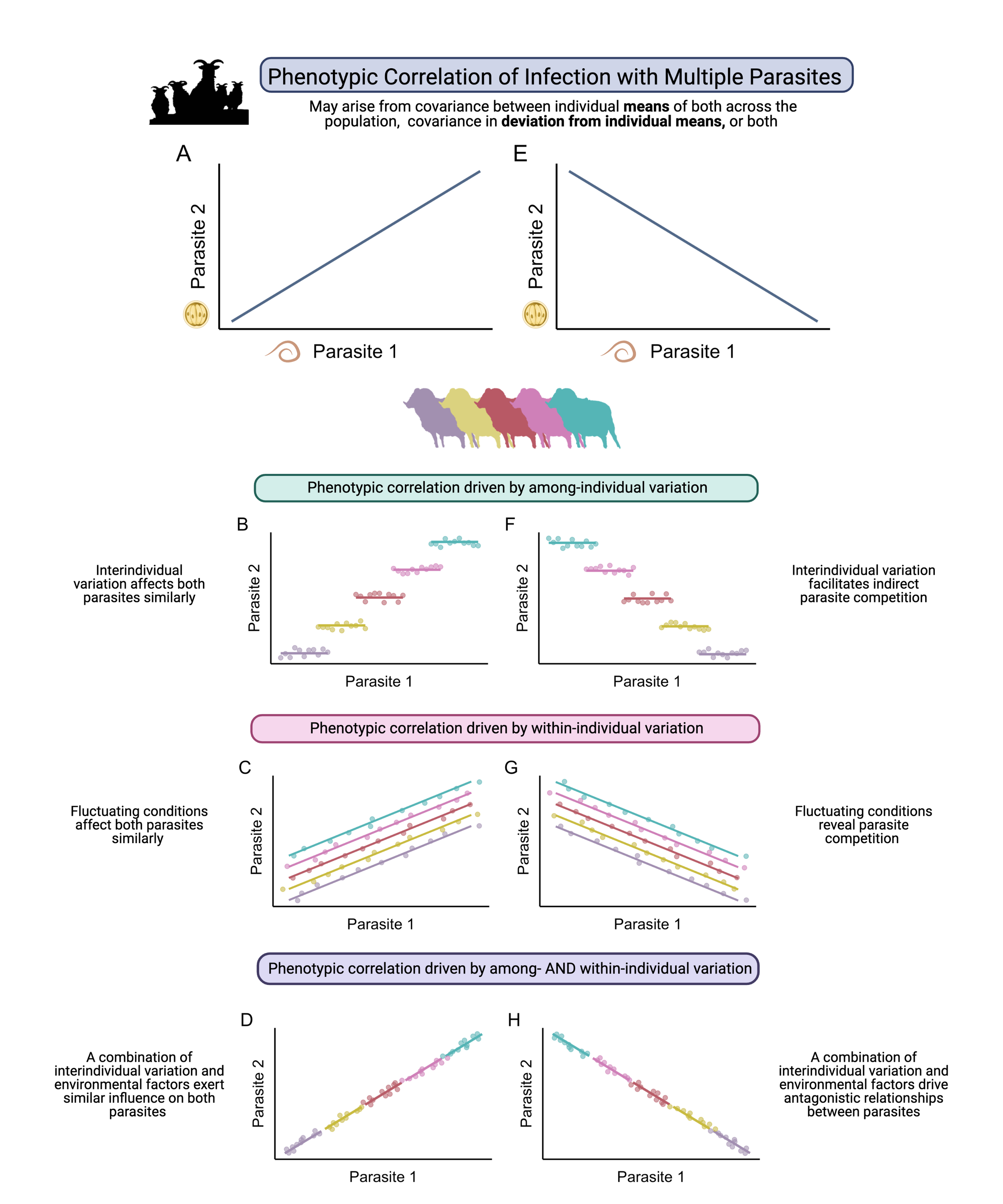Drivers & consequences of co-infection in wild animals
Synergistic interactions between parasites and wildlife health
SYNZOOTICS
Ecologists increasingly recognise coinfection as an important component of emergent epidemiological patterns, connecting aspects of ecoimmunology, behaviour, ecosystem function and even extinction risk. Building on syndemic theory in medical anthropology, we propose the term ‘synzootics’ to describe co-occurring enzootic or epizootic processes that produce worse health outcomes in wild animals. Using framing from syndemic theory, we describe how the synzootic concept offers new insights into the ecology and evolution of infectious diseases. We then recommend a set of empirical criteria and lines of evidence that can be used to identify synzootics in nature. We conclude by exploring how synzootics could indirectly drive the emergence of novel pathogens in human populations.
READ THE PAPER HERE AT JOURNAL OF ANIMAL ECOLOGY
Processes underlying parasite community dynamics
Longitudinal dynamics of co-infecting gastrointestinal parasites in a wild sheep population
Within-year variation in infection is a ubiquitous feature of natural populations, but is determined by a complex interplay of environmental, parasitological and host factors. At the same time, co-infection is the norm in the wild. Longitudinal dynamics of co-infecting parasites may therefore be further complicated by covariation across multiple parasites. Here, we used faecal parasite egg & oocyst counts collected repeatedly from individually marked wild Soay sheep to investigate seasonal dynamics of six gastrointestinal parasite groups. Prevalence and abundance tended to be higher in spring and summer, and abundance was higher in lambs than adults. We found within-year variation in highly prevalent strongyle nematode counts was dependent on adult reproductive status, where reproductive ewes had distinct dynamics compared to males and barren ewes. For similarly prevalent coccidia we found an overall peak in oocyst counts in spring but no differences among males, barren and pregnant ewes. Using multivariate mixed-effects models, we further show that apparent positive correlation between strongyle and coccidia counts was driven by short-term within-individual changes in both counts rather than long-term among-individual covariation. Overall, these results demonstrate that seasonality varies across demographic and parasite groups and highlight the value of investigating co-infection dynamics over time.
read the preprint here at parasitology
Helminth-microparasite co-infections in wild mice
Experimental parasite community perturbation reveals associations between Sin Nombre virus and gastrointestinal nematodes in a rodent reservoir host
Individuals are often coinfected with several parasite species, yet measuring within-host interactions remains difficult in the wild. Consequences of such interactions on host health and epidemiology are therefore often unknown. We experimentally reduced common nematode infections and found a subsequent increase prevalence of an important zoonotic pathogen, Sin Nombre virus (SNV), in its primary wild rodent reservoir. Furthermore, we found that nematode – SNV coinfected mice were in better condition and survived longer than uninfected or singly infected mice. Our results suggest that parasite community interactions may play a key role in epidemiology and transmission of zoonotic pathogens


